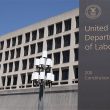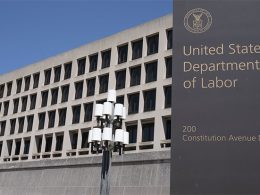by Howard Marks, Vice-Chairman, Oaktree Capital
In May, I wrote a follow-up memo to Sea Change (December 2022) that was shared exclusively with Oaktree clients. In Further Thoughts on Sea Change, I argued that the trends I had highlighted in the original memo collectively represented a sweeping alteration of the investment environment that called for significant capital reallocation. This memo was originally sent to Oaktree clients on May 30, 2023.1
This Time It Really Might Be Different
On October 11, 1987, I first came across the saying “this time it’s different.” According to an article in The New York Times by Anise C. Wallace, Sir John Templeton had warned that when investors say times are different, it’s usually in an effort to rationalize valuations that appear high relative to history – and it’s usually done to investors’ ultimate detriment. In 1987, it was high equity prices in general; the article I cite was written just eight days before Black Monday, when the Dow Jones Industrial Average declined by 22.6% in a single day. A dozen years later, the new thing people were excited about was the prospect that the Internet would change the world. This belief served to justify ultra-high prices (and p/e ratios of infinity) for digital and e-commerce stocks, many of which went on to lose more than 90% of their value over the next year or so.
Importantly, however, Templeton allowed that things might really be different 20% of the time. On rare occasions, something fundamental does change, with significant implications for investing. Given the pace of developments these days – especially in technology – I imagine things might genuinely be different more often than they were in Templeton’s day.
Anyway, that’s all preamble. My reason for writing this memo is that, while most people I speak with seem to agree with many of my individual observations in Sea Change, few have expressly agreed with my overall conclusion and said, “I think you’re right: We might be seeing a significant and possibly lasting change in the investment environment.” This memo’s main message is that the changes I described in Sea Change aren’t just usual cyclical fluctuations; rather, taken together, they represent a sweeping alteration of the investment environment, calling for significant capital reallocation.
The Backdrop
I’ll start off by recapping my basic arguments from Sea Change:
- In late 2008, the Federal Reserve took the fed funds rate to zero for the first time ever in order to rescue the economy from the effects of the Global Financial Crisis.
- Since that didn’t cause inflation to rise from its sub-2% level, the Fed felt comfortable maintaining accommodative policies – low interest rates and quantitative easing – for essentially all of the next 13 years.
- As a result, we had the longest economic recovery on record – exceeding ten years – and “easy times” for businesses seeking to earn profits and secure financing. Even money-losing businesses had little trouble going public, obtaining loans, and avoiding default and bankruptcy.
- The low interest rates that prevailed in 2009-21 made it a great time for asset owners – lower discount rates make future cash flows more valuable – and for borrowers. This in turn made asset owners complacent and potential buyers eager. And FOMO became most people’s main concern. The period was correspondingly challenging for bargain hunters and lenders.
- The massive Covid-19 relief measures – combined with supply-chain snags – resulted in too much money chasing too few goods, the classic condition for rising inflation.
- The higher inflation that arose in 2021 persisted into 2022, forcing the Fed to discontinue its accommodative stance. Thus, the Fed raised interest rates dramatically – its fastest tightening cycle in four decades – and ended QE.
- For a number of reasons, ultra-low or declining interest rates are unlikely to be the norm in the decade ahead.
- Thus, we’re likely to see tougher times for corporate profits, for asset appreciation, for borrowing, and for avoiding default.
- Bottom line: If this really is a sea change – meaning the investment environment has been fundamentally altered – you shouldn’t assume the investment strategies that have served you best since 2009 will do so in the years ahead.
Having supplied this summary, I’m going to put flesh on these bones and share some additional insights.
A Momentous Development
To promote discussion these days, I often start by asking people, “What do you consider to have been the most important event in the financial world in recent decades?” Some suggest the Global Financial Crisis and bankruptcy of Lehman Brothers, some the bursting of the tech bubble, and some the Fed/government response to the pandemic-related woes. No one cites my candidate: the 2,000-basis-point decline in interest rates between 1980 and 2020. And yet, as I wrote in Sea Change, that decline was probably responsible for the lion’s share of investment profits made over that period. How could it be overlooked?
First, I suggest the metaphor of boiling a frog. It’s said that if you put a frog in a pot of boiling water, it’ll jump out. But if you put it in cool water and turn on the stove, it’ll just sit there, oblivious, until it boils to death. The frog doesn’t detect the danger – just as people fail to perceive the significance of the interest rate decline – because of its gradual, long-term nature. It’s not an abrupt development, but rather a drawn out, highly influential trend.
Second, in Sea Change, I compared the 40-year interest rate decline to the moving walkway at an airport. If you stand still on the walkway, you’ll move effortlessly; but, if you walk at your normal pace, you’ll move ahead rapidly – perhaps without being fully conscious of why. In fact, if everyone’s walking on the moving walkway, doing so can easily go unnoted, and the walkers might conclude that their rapid progress is “normal.”
Finally, there’s what John Kenneth Galbraith called “the extreme brevity of the financial memory.” Relatively few investors today are old enough to remember a time when interest rates behaved differently. Everyone who has come into the business since 1980 – in other words, the vast majority of today’s investors – has, with relatively few exceptions, only seen interest rates that were either declining or ultra-low (or both). You have to have been working for more than 43 years, and thus be over 65, to have seen a prolonged period that was otherwise. And since market conditions made it tough to find employment in our industry in the 1970s, you probably had to get your first job in the 1960s (like me) to have seen interest rates that were either higher and stable or rising. I believe the scarcity of veterans from the ’70s has made it easy for people to conclude that the interest rate trends of 2009-21 were normal.
The Relevance of History
The 13-year period from the beginning of 2009 through the end of 2021 saw two rescues from financial crises, a generally favorable macro environment, aggressively accommodative central bank policies, a lack of inflation worries, ultra-low and declining interest rates, and generally uninterrupted investment gains. The question, of course, is whether investors should expect a continuation of those trends.
- Recent events have shown that the risk of rising inflation can’t be ignored in perpetuity. Moreover, the reawakening of inflationary psychology will probably make central banks less likely to conclude that they can engage in continuous monetary stimulation without consequences.
- Thus, interest rates can’t be counted on to stay “lower for longer” and produce perpetual prosperity, as many thought was the case in late 2020.
- Also in late 2020, Modern Monetary Theory was accepted by some as meaning deficits and national debt could be disregarded in countries “with control of their currencies.” (We no longer hear anything about this notion.)
In Sea Change, I listed several reasons why I don’t think interest rates are going back to that period’s lows on a permanent basis, and I still find these arguments compelling. In particular, I find it hard to believe the Fed doesn’t think it erred by sticking with ultra-low interest rates for so long.
As noted above, to fight the GFC, the Fed took the fed funds rate to roughly zero for the first time in late 2008. Macro conditions were frightening, as a vicious cycle capable of undermining the entire financial system appeared to be underway. For this reason, aggressive action was certainly called for. But I was shocked when I looked at the data and saw that the Fed kept the rate near zero for nearly seven years. Setting interest rates at zero is an emergency measure, and we certainly didn’t have a continuous emergency through late 2015. To me, those sustained low rates stand out as a mistake not to be repeated.
Further, by 2017-18, with the fed funds rate around 1%, it had become clear to many that there wasn’t room for the Fed to reduce rates if necessary to stimulate the economy during a recession. But when the Fed attempted to raise rates to create that room, it encountered pushback from investors (see the fourth quarter of 2018). I find it hard to believe the Fed would want to reimpose that limitation on its toolkit.
A recurring theme of mine is that, even though many people agree that free markets do the best job of allocating resources, we haven’t had a free market in money in roughly the last two decades, a period of Fed activism. Instead, Fed policy has been accommodative almost the entire time, and interest rates have been kept artificially low. Rather than letting economic and market forces determine the rate of interest, the Fed has been unusually active in setting interest rates, greatly influencing the economy and the markets.
Importantly, this distorts the behavior of economic and market participants. It causes things to be built that otherwise wouldn’t have been built, investments to be made that otherwise wouldn’t have been made, and risks to be borne that otherwise wouldn’t have been accepted. There’s no doubt that this is true in general, and I’m convinced it accurately describes the period in question.
Many articles about the problems at Silicon Valley Bank and First Republic Bank cite errors that were made in the preceding “easy-money” period. Rapid growth, unwise inducements to customers, and lax financial management were all encouraged in a climate with accommodative Fed policy, uniformly positive expectations, and low levels of risk aversion. This is just one example of a time-worn adage in action: “The worst of loans are made in the best of times.” I don’t think the Fed should return us to an environment that has been distorted to encourage universal optimism, belief in the existence of a Fed put, and thus a dearth of prudence.
If the declining and/or ultra-low interest rates of the easy-money period aren’t going to be the rule in the years ahead, numerous consequences seem probable:
- economic growth may be slower;
- profit margins may erode;
- default rates may head higher;
- asset appreciation may not be as reliable;
- the cost of borrowing won’t trend downward consistently (though interest rates raised to fight inflation likely will be permitted to recede somewhat once inflation eases);
- investor psychology may not be as uniformly positive; and
- businesses may not find it as easy to obtain financing.
In other words, after a long period when everything was unusually easy in the world of investing, something closer to normalcy is likely to set in.
Please note that I’m not saying interest rates, having declined by 2,000 basis points over the last 40 or so years, are going back up to the levels seen in the 1980s. In fact, I see no reason why short-term interest rates five years from now should be appreciably higher than they are today. But still, I think the easy times – and easy money – are largely over. How can I best communicate what I’m talking about? Try this: Five years ago, an investor went to the bank for a loan, and the banker said, “We’ll give you $800 million at 5%.” Now the loan has to be refinanced, and the banker says, “We’ll give you $500 million at 8%.” That means the investor’s cost of capital is up, his net return on the investment is down (or negative), and he has a $300 million hole to fill.
What Strategies Will Work Best?
It seems obvious that if certain strategies were the best performers in a period with a given set of characteristics, it must be true that a starkly different environment will produce a dramatically altered list of winners.
- As mentioned above in the recap of Sea Change, the 40 years of low and declining interest rates were hugely beneficial for asset owners. Declining discount rates and the associated reduction in the competitiveness of bond returns led to substantial asset appreciation. Thus, asset ownership – whether related to companies, pieces of companies (equities), or properties – was the place to be.
- Falling interest rates brought down the cost of capital for borrowers. As this occurred, any borrowing automatically became more successful than originally contemplated.
- And, as I also mentioned in Sea Change, the combined result of the above for investors who bought assets on borrowed money was a double bonanza. Think back to the first of the sea changes I mentioned in that memo: the advent of high yield bonds in 1977-78, which brought about the trend toward bearing risk for profit and the emergence of levered investment strategies. It’s very notable that almost the entire history of levered investment strategies has been written during a period of declining and/or ultra-low interest rates. For example, I would venture that nearly 100% of capital for private equity investing has been put to work since interest rates began their downward move in 1980. Should it come as a surprise that levered investing thrived in such salutary conditions?
- At the same time, declining interest rates rendered lending – or buying debt instruments – less rewarding. Not only were prospective returns on debt low throughout the period, but investors who were eager to get away from the ultra-low yields on safer securities like Treasurys and investment grade corporates competed spiritedly to deploy capital in higher-risk markets, and this caused many to accept lower returns and reduced lender protections.
- Finally, conditions in those halcyon days created tough times for bargain hunters. Where do the greatest bargains come from? The answer: the desperation of panicked holders. When times are untroubled, asset owners are complacent, and buyers are eager, no one has any urgency to exit, making it very hard to score significant bargains.
Investors who profited in this period from asset ownership and levered investment strategies may overlook the salutary effect of interest rates on asset values and borrowing costs and instead think the profits stemmed from the inherent merit of their strategies, perhaps with some help from their own skill and wisdom. That is, they may have violated a basic rule in investing: “Never confuse brains and a bull market.” Given the benefits of being on the “moving walkway” during this period, it seems to me it would have required really bad decision-making or really bad luck for a purchase of assets made with borrowed money to have been unsuccessful.
Will asset ownership be as profitable in the years ahead as in the 2009-21 period? Will leverage add as much to returns if interest rates don’t decline over time or if the cost of borrowing isn’t much below the expected rate of return on the assets purchased? Whatever the intrinsic merits of asset ownership and levered investment, one would think the benefits will be reduced in the years ahead. And merely riding positive trends by buying and levering may no longer be sufficient to produce success. In the new environment, earning exceptional returns will likely once again require skill in making bargain purchases and, in control strategies, adding value to the assets owned.
Lending, credit, or fixed income investing should be correspondingly better off. As I mentioned in my December memo, the 13 years in question were a difficult, dreary, low-return period for credit investors, including Oaktree. Most of the asset classes we operate in were offering the lowest prospective returns any of us had ever seen. The options were to (a) hold and accept the new lower returns, (b) reduce risk to prepare for the correction that the demand for higher returns would eventually bring, or (c) increase risk in pursuit of higher returns. Obviously, all of these had drawbacks. The bottom line was that it was quite challenging to safely and dependably pursue high returns in a low-return world like the one we were experiencing.
But now, higher prospective returns are here. In early 2022, high yield bonds (for example) yielded in the 4% range – not a very useful return. Today, they yield more than 8%, meaning these bonds have the potential to make a great contribution to portfolio results. The same is generally true across the entire spectrum of non-investment grade credit.
Asset Allocation Today
My thinking about the sea change materialized mostly as I was visiting clients last October and November. When I got home, I wrote the memo and began to discuss its thesis. And at the December meeting of a non-profit investment committee, I said the following:
Sell off the big stocks, the small stocks, the value stocks, the growth stocks, the U.S. stocks, and the foreign stocks. Sell the private equity along with the public equity, the real estate, the hedge funds, and the venture capital. Sell it all and put the proceeds into high yield bonds at 9%.
This institution needs to earn an annual return of 6% or so on its endowment, and I’m convinced that if it holds a competently assembled portfolio of 9% high yield bonds, it would be overwhelmingly likely to exceed that 6% target. But mine wasn’t a serious suggestion, more a statement designed to evoke discussion of the fact that, thanks to the changes over the last year and a half, investors today can get equity-like returns from investments in credit.
The Standard & Poor’s 500 Index has returned just over 10% per year for almost a century, and everyone’s very happy (10% a year for 100 years turns $1 into almost $14,000). Nowadays, the ICE BofA U.S. High Yield Constrained Index offers a yield of over 8.5%, the CS Leveraged Loan Index offers roughly 10.0%, and private loans offer considerably more. In other words, expected pre-tax yields from non-investment grade debt investments now approach or exceed the historical returns from equity.
And, importantly, these are contractual returns. When I shifted from equities to bonds in 1978, I was struck by a major difference. With equities, the bulk of your return in the short or medium term depends on the behavior of the market. If Mr. Market’s in a good mood, as Ben Graham put it, your return will benefit, and vice versa. With credit instruments, on the other hand, your return comes overwhelmingly from the contract between you and the borrowers. You give a borrower money up front; they pay you interest every six months; and they give you your money back at the end. And, to greatly oversimplify, if the borrower doesn’t pay you as promised, you and the other creditors get ownership of the company via the bankruptcy process, a possibility that gives the borrower a lot of incentive to honor the contract. The credit investor isn’t dependent on the market for returns; if the market shuts down or becomes illiquid, the return for the long-term holder is unaffected. The difference between the sources of return on stocks and bonds is profound, something many investors may understand intellectually but not fully appreciate.
It’s been years since prospective returns on credit were competitive with those on equities. Now it’s the case again. Should the non-profit whose board I sit on put all its money into credit instruments? Perhaps not. But Charlie Munger exhorts us to “invert,” or flip questions like this. To me, this means allocators should ask themselves, “What are the arguments for not putting a significant portion of our capital into credit today?”
Here I’ll mention that, over the years, I’ve seen institutional investors pay lip service to developments in markets and make modest changes in their asset allocation in response. When the early index funds outperformed active management in the 1980s, they said, “We’ve got that covered: We’ve moved 2% of our equities to an index fund.” When emerging markets look attractive, the response is often to move another 2%. And from time to time, a client tells me they’ve put 2% in gold. But if the developments I describe really constitute a sea change as I believe – fundamental, significant, and potentially long-lasting – credit instruments should probably represent a substantial portion of portfolios . . . perhaps the majority.
What’s the downside? How could this be a mistake?
- First, individual borrowers can default and fail to pay. It’s the main job of the credit manager to weed out the non-payers, and history shows it can be done. Isolated defaults are unlikely to derail a well-selected and well-diversified portfolio. And if you’re worried about a wave of defaults hitting your credit portfolio, think about what the implications of that environment would be for equities or other ownership assets.
- Second, by their nature, credit instruments don’t have much potential for appreciation. Thus, it’s entirely possible that equities and levered investment strategies will surprise on the upside and outperform in the years ahead. There’s no denying this, but it should be borne in mind that the “downside risk” here consists of the opportunity cost of returns forgone, not failing to achieve the return one sought.
- Third, bonds and loans are subject to price fluctuations, meaning having to sell in a weak period could cause losses to be realized. But credit instruments are far from alone in this regard, and the magnitude of the fluctuations on “money-good” bonds and loans is constrained significantly by the magnetic “pull to par” exerted by the promise of repayment upon maturity.
- Fourth, the returns I’ve been talking about are nominal returns. If inflation isn’t brought under control, those nominal returns could lose significant value when they’re converted into real returns, which are what some investors care about most. Of course, real returns on other investments could suffer as well. Many people think of stocks and real estate as potentially providing inflation protection, but my recollection from the 1970s is that the protection typically takes hold only after prices have declined so as to provide higher prospective returns.
- Finally, the sea change could end up being less long-lasting than I expect, meaning the Fed takes the fed funds rate back down to zero or 1% and the yields on credit recede accordingly. Fortunately, by buying multi-year credit instruments, an investor can tie up the promised return for a meaningful period (assuming the investment provides some degree of call protection). Reinvesting will have to be dealt with upon maturity or call, but once you’ve made the credit investments I’m suggesting, you will at least have secured the promised yield – perhaps minus losses on defaults – for the term of the instruments.
* * *
The overarching theme of my sea-change thinking is that, largely thanks to highly accommodative monetary policy, we went through unusually easy times in a number of important regards over a prolonged period, but that time is over. There clearly isn’t much room for interest rate declines from today’s levels, and I don’t think short-term interest rates will be as low in the coming years as in the recent past. For these and other reasons, I believe the years ahead won’t be as easy. But while my expectations may prove correct, there’s no evidence yet on which I can hang my hat. Why not? My answer is that the economy and markets are in the early stages of a transition that’s far from complete.
Asset prices are established through a tug-of-war between buyers who think prices will rise and sellers who think they’ll fall. There’s been an active one over the last year or so as sentiment has waxed and waned regarding the outlook for inflation, recession, corporate profits, geopolitics, and especially a Fed pivot back to accommodation. The tug-of-war is ongoing, and, as a result, the S&P 500 is within a half percent of where it was a year ago.
I’ve been thinking lately about the fact that being an investor requires a person to be somewhat of an optimist. Investors have to believe things will work out and that their skill will enable them to wisely position capital for the future. Equity investors have to be particularly optimistic, as they have to believe someone will come along who’ll buy their shares for more than they paid. My point here is that optimists surrender their optimism only grudgingly, and phenomena such as cognitive dissonance and self-delusion permit opinions to be held long after information to the contrary has arrived. This is among the reasons why they say of the stock market: “Things can take longer to happen than you thought they would, but then they happen faster than you thought they could.” Today’s sideways or “range-bound” market tells me investors possess a good amount of optimism despite the worries that have arisen. In the coming months, we’ll find out if the optimism was warranted.
The positive forces that shaped the 2009-21 period began to change around 18 months ago. The higher inflation turned out not to be transitory. This brought on interest rate increases, concern that a recession would result, some resurrection of worry over the possibility of loss, and thus insistence on greater compensation for bearing risk. But while most people no longer see an outlook that’s flawless, few think it’s hopeless either. Just as optimism abetted a positive cycle in those 13 years, I believe a lessening of optimism will throw some sand into the financial gears in a variety of ways, some of which may be unforeseeable.
In this latter regard, it’s essential to acknowledge that since we haven’t lived through times exactly like the years that lie ahead – and since changes in the economic/financial environment limit the applicability of history – we’re likely to encounter surprises. And if the environment is less favorable, the surprises are likely to be on the downside.
Please note, as mentioned earlier, that I’m absolutely not saying interest rates are going back to the high levels from which they’ve come. I have no reason to believe that the recession most people believe lies ahead will be severe or long-lasting. And with valuations high, but not terribly so, I don’t think a stock market collapse can reasonably be predicted. This isn’t a call for dramatically increased defensiveness. Mostly I’m just talking about a reallocation of capital, away from ownership and leverage and toward lending.
This isn’t a song I’ve sung often over the course of my career. This is the first sea change I’ve remarked on and one of the few calls I’ve made for substantially increasing investment in credit. But the bottom line I keep going back to is that credit investors can access returns today that:
- are highly competitive versus the historical returns on equities,
- exceed many investors’ required returns or actuarial assumptions, and
- are much less uncertain than equity returns.
Unless there are serious holes in my logic, I believe significant reallocation of capital toward credit is warranted.
October 11, 2023
Endnotes
1 All market data cited in this memo is as of May 30, 2023.
Legal Information and Disclosures
This memorandum expresses the views of the author as of the date indicated and such views are subject to change without notice. Oaktree has no duty or obligation to update the information contained herein. Further, Oaktree makes no representation, and it should not be assumed, that past investment performance is an indication of future results. Moreover, wherever there is the potential for profit there is also the possibility of loss.
This memorandum is being made available for educational purposes only and should not be used for any other purpose. The information contained herein does not constitute and should not be construed as an offering of advisory services or an offer to sell or solicitation to buy any securities or related financial instruments in any jurisdiction. Certain information contained herein concerning economic trends and performance is based on or derived from information provided by independent third-party sources. Oaktree Capital Management, L.P. (“Oaktree”) believes that the sources from which such information has been obtained are reliable; however, it cannot guarantee the accuracy of such information and has not independently verified the accuracy or completeness of such information or the assumptions on which such information is based.
This memorandum, including the information contained herein, may not be copied, reproduced, republished, or posted in whole or in part, in any form without the prior written consent of Oaktree.
© 2023 Oaktree Capital Management, L.P.
















